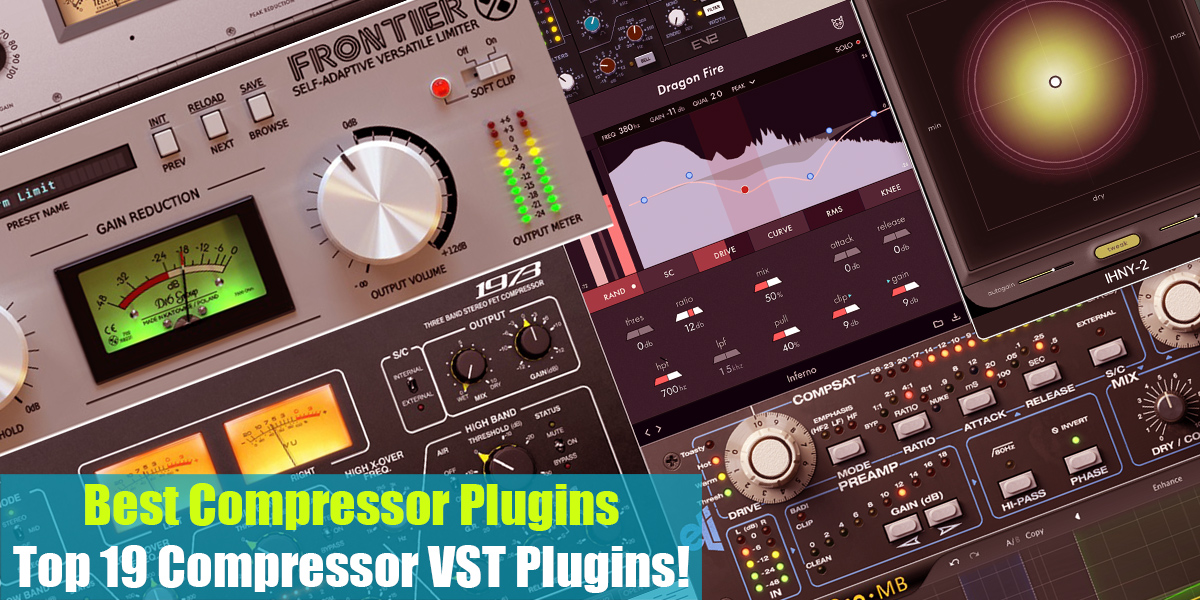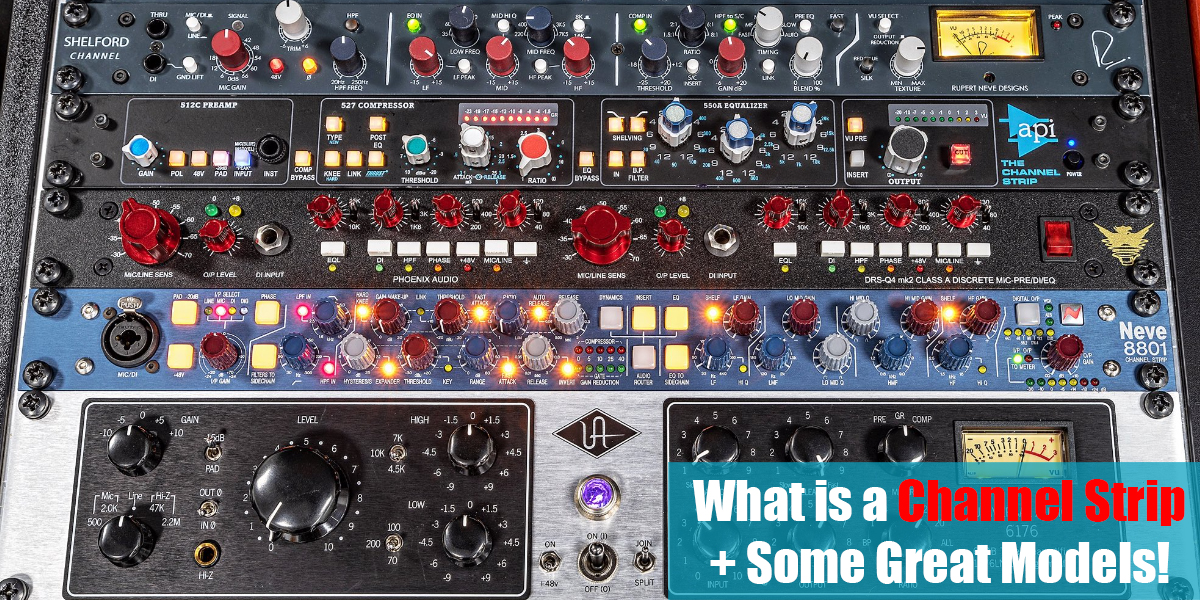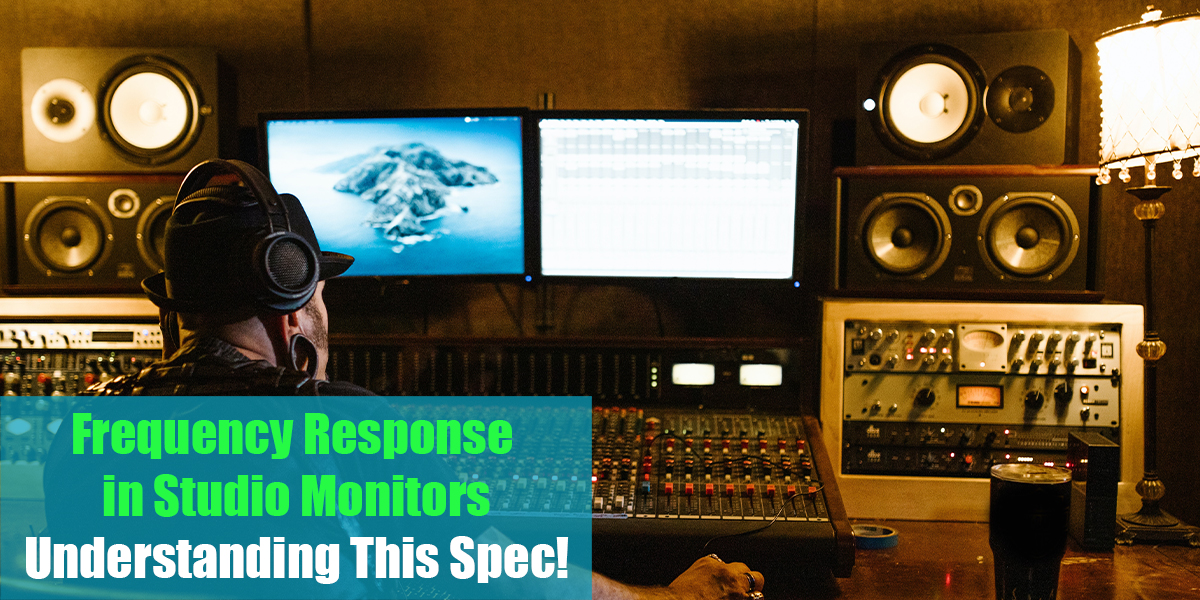What Is VariMu Compressor
Introduction
Welcome to yet another informative guide on another type of compressor. In this article we are going to talk about the VariMu Compressors, also found around the web like Variable Mu compressors.
It was originally a hardware unit designed to produce a creamy, tube-based analog squeeze, variable mu compressors have been used in mixing and mastering for decades. Having a smooth and clear compressing style is perfect for gluing mixes together without adding too much saturation or altering the original signal too much, which makes it a favorite tool among mastering engineers.
What Is Variable Mu Compressor?
A tube-based (or valve-based) compressor was the only machine-modifying gain device available in the early days of audio. The level detector circuit transmitted voltage to the tube in accordance with the principle they were working on. As a result of this voltage, the tube’s gain is directly affected. In the early days of compression, Fairchild and Altec were the first devices to implement this principle.
It is today that Manley provides an update on this approach based on the state of the art. This type of electronic system uses variable voltage input in place of a transistor, in which the variable voltage input changes the bias of the tube instead of changing the gain of the transistor. Vari-mu is also a trademark of Manley.
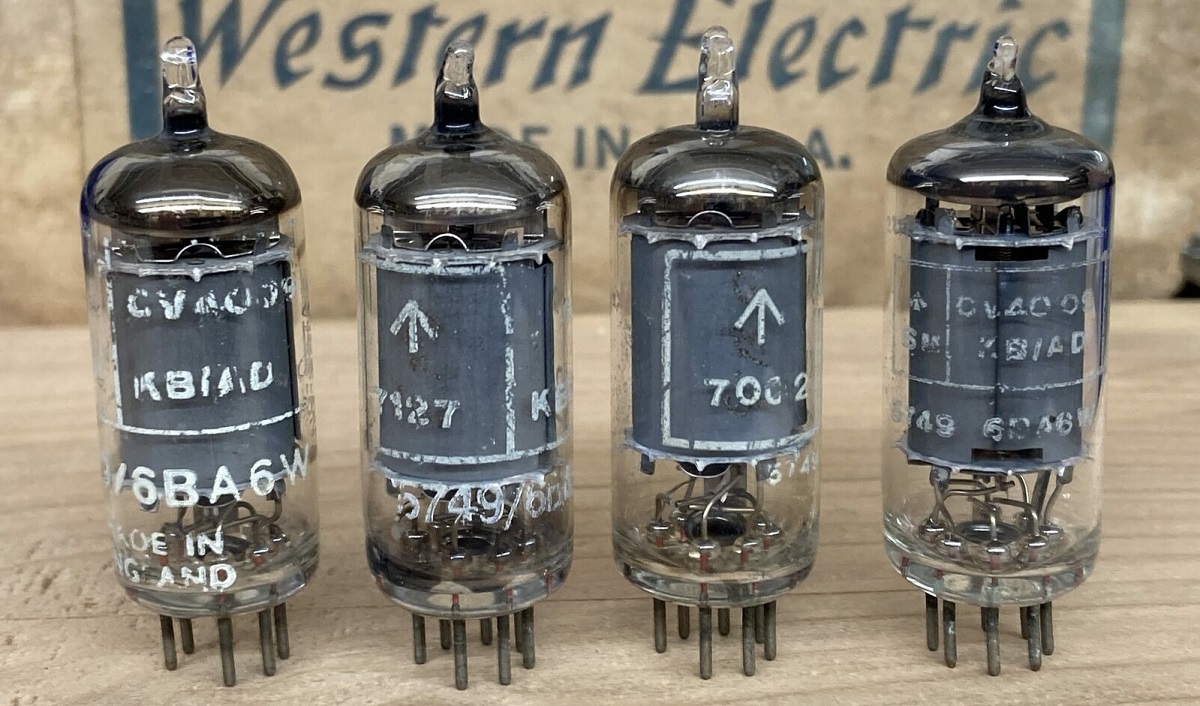
Manley Variable Mu Stereo Compressor Limiter
There is no doubt that the renowned Manley Vari Mu Limiter/Compressor is the choice of producers and recording engineers worldwide – and you will be a believer as soon as you hear what it can do for your sound!
Its capabilities are well known to those who have heard the Fairchild 670 Series limiters in action – yet the Variable Mu produces an even sweeter sound than the classic limiters. Mixing and mastering are optimized by its adjustable attack and release settings, but many tracking situations can be accommodated by it as well. In terms of versatility and reliability, Manley’s Variable Mu is the best-selling device in the company’s product line.
There is no clone of the Variable Mu, but the Fairchild 670 series uses a similar limiting principle, and those who know this gear know it’s very special. Due to the variable gain, “mu” means gain or amplification factor, unlike most devices, the Variable Mu provides true variable gain.
With the vacuum tube rectified side-chain control voltages, the 5670 dual triodes are continuously re-biased so the peak-reducing and compression action can happen. By doing so, the tube’s gain will be changed smoothly.
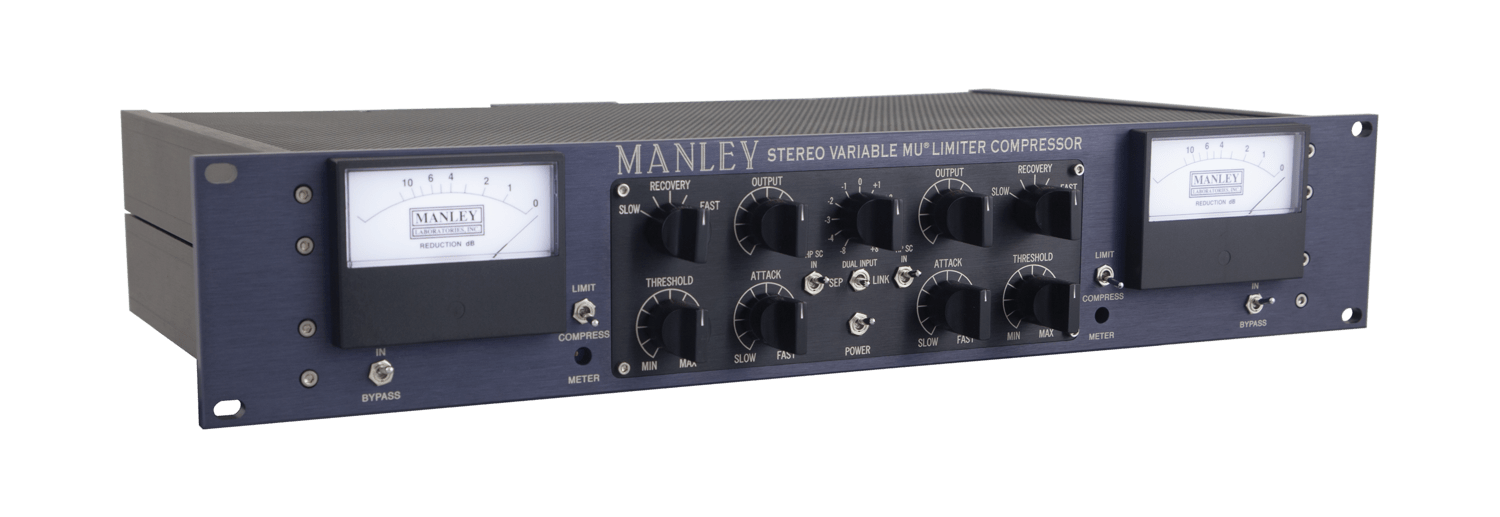
A soft-knee 1.5:1 ratio is used in the Variable Mu’s Compress mode, whereas a sharper knee 20:1 ratio is used in the Limit mode when limiting signals of greater than 12dB. It is interesting to note that the knee actually becomes softer as more limiting is applied. Input and output can be modulated in a creative manner by turning up the input and reducing the output while using little or no compression.
Vari-Mu is ideal for dual-mono and stereo applications. You may notice that it has ganged input controls, but it is certainly not mono-incompatible. Additionally, you can always adjust the levels of your individual sources elsewhere, since there are separate threshold and output controls.
As soon as you switch to Link mode, you will realize the advantage of the stereo input control. That is what the Variable Mu excels at limiting and compressing final mixes, 3-track mixes, or mastering mixes.
| IMAGE | PRODUCT | For US Customers |
For EU Customers |
Amazon Store |
|---|---|---|---|---|
Manley Variable Mu Stereo Compressor Limiter |
Characteristics Of Variable-Mu Compression
One of the benefits that comes with the variable mu compression is that the tube compressor introduces a little bit of musical and appealing distortions into the signal. Also, the detector of the levels inside of the compressor detects and changes the gain accordingly. When it comes to making changes to the gain, it can be increased or decreased in a non-instantaneous manner, which is something that we really like.
In terms of the sound that the Vari Mu compressor generates, it often times relates to sounding organically or creamy. Probably one of the biggest impacts is the tubes that are used inside the unit and also the unique attack and release times that are found on such units. And probably the best thing that you can do with the vari mu compressor is to properly increase or decrease the gain which will introduce these features into the signal.
Also, the impact that the attack and release have on the signal is really influential, because you will need to properly set up those parameters to complement your tracks. There are signals that require faster attacks and faster release and there are signals that require medium attacks and slower release times, and all of that will need to be decided by you.
To additionally explain what creamy and vintage sound is, it comes from the harmonic distortion and saturation from the variable mu compressors and the coloration that comes from the tubes themselves. The harmonic richness and warmth are mainly coming from the circuitry and the tubes. As you increase the ratio on the compressor, the tube saturation on the signals also increases, and is that pleasing coloration that we are after.
Another interesting thing is that the vari mu compressors tend to have a compression ratio that is dynamic which will probably vary depending on the input signal and the dynamics that the track has. The nature of this compressor makes sounds to appear more natural and is an amazing compressor to use on acoustic instruments like guitars drums and vocals.
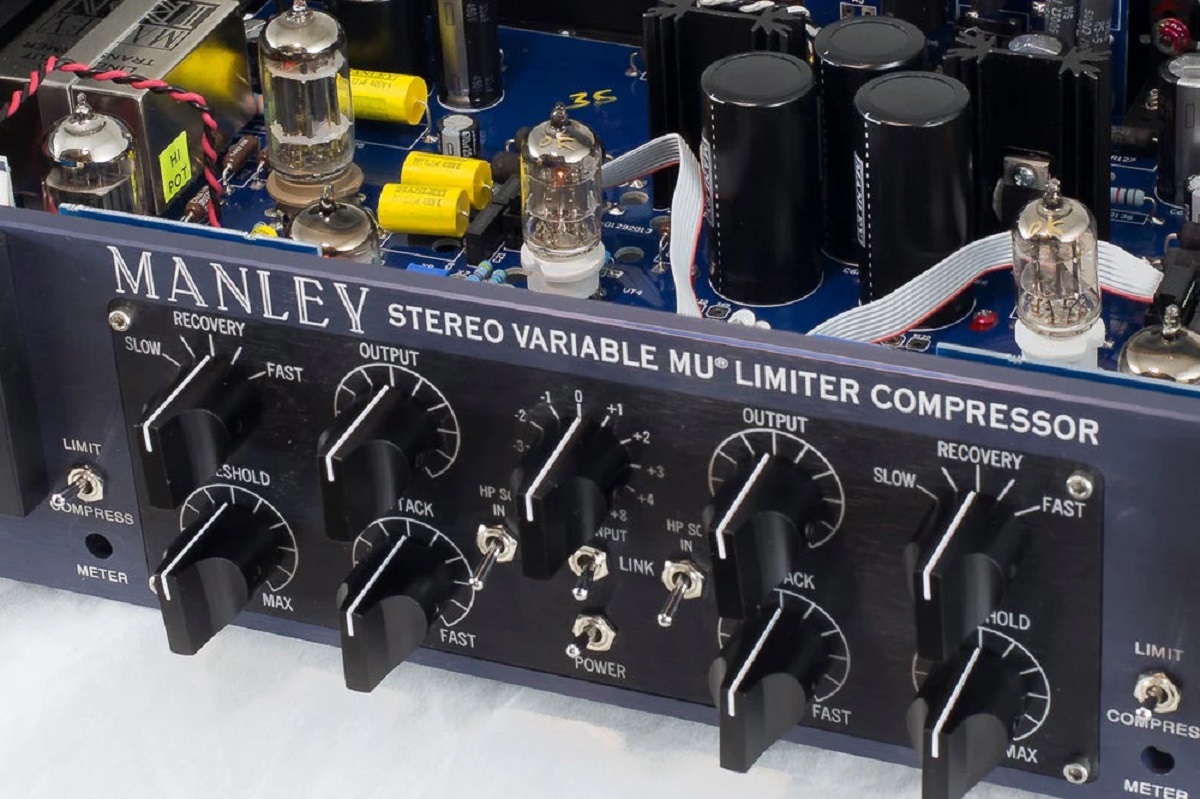
‘‘Soft-Knee” On Vari-Mu Compressors
One other interesting feature that can be found on vari mu compressors is the soft knee. This means that once the input level crosses the threshold the compressor will gradually increase and make the curve to be a little bit gentler and curvier instead of being sharp as with the hard knee.
So one of the traits that the variable mu compressor has is to apply subtle and transparent compression, and this is one of the characteristics that come with it that probably impacts that outcome the most. In terms of subtleness and softness, one other thing is the relatively slow attack and release times that these compressors have.
So to reiterate, once the audio signal decreases in level, the compressor will start reducing the compression amount but when the signal gradually increases, the knee will also gradually introduce the compression. As can be noticed from the image below, the soft knee it’s a smoother shape of a curve that actually responds with smoother compression.
This also adds to the smoothness because the transition between the compressed and uncompressed signal right at the threshold is truly smooth and when compared with the compressors that have hard knees, this shape is much more musical and gentle.
One other thing to mention here is that when you are working on a material, the dynamic range is compressed more naturally and musically which is something that we are after if we are working with organic instruments. Not that the variable mu compressors have this feature only, but audio engineers and mixing engineers tend to go with this type of compression just for this feature, which is ideal for processing elements that need to sound more natural.
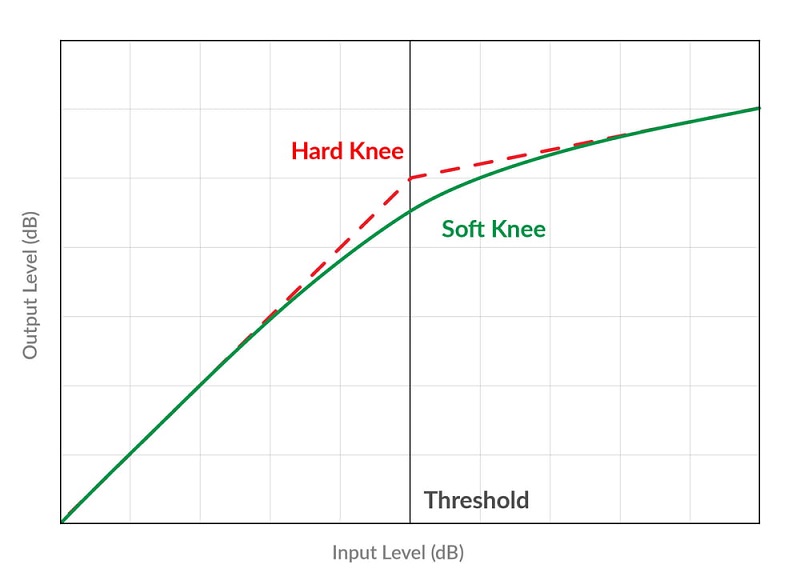
Scenarios Where Vari-Mu Is Useful
Besides using this type of compression on single tracks, it also has great usage when it comes to mastering. Using these types of compression will end up giving you a cohesive feel of all the elements that are found in your track and it will create a sense of cohesiveness in the song. The program-dependent feature that is found in the variable mu compressors is a great feature and it’s mostly used in the mastering world.
As we said, this type of compressor is amazing for gluing elements together which makes it also useful to be applied on sub-mixes or groups. Probably one of the best places to apply variable mu compression is on a drum bus or in a background vocal group to glue it more together and make it sound tighter and more coherent.
We shared what we think are the places where you can add this type of compression the most and improve those elements in particular, but that doesn’t mean that you cannot apply the signal to everything you wish if you are in need of some smooth and creamy compression. What you will need to do is to properly set up the compressor parameters and enjoy the outcomes that you will have.
With that being said, this is probably the most important feature of the vari mu compressors. They can be applied to every type of signal if you wish, because of their versatility and the goodness that they can bring to the signal. With this, we are concluding the explanation of what is vari mu compression and we are going to move on with some plugin versions of such compression that you can use in your DAW to improve your signals.
- What is FET Compressor: Best 5 Models, Guide, and Plugins!
- What Are Optical Compressors: Top 5 Opto Compressors Listed!
- Best Mastering Compressors: Top 9 Units For Your Mastering Studio!
- Top 10 Compressors: Best Compressor Units You Can Get!
- Top 10 Best 500 Series Compressors: Best Models Shown!
Vari Mu Compressor Plugin Emulations
1. Softube Summit Audio TLA-100A
The first plugin that we chose to share with you is the Summit Audio TLA-100A created by Softube. This is an emulation of the original Summit Audio TLA-100A and now you will be able to have this unit in your computer and DAW. This compressor was used for over 30 years and all for a good reason – it gives amazing results for both studio usages and live acts as well.
Being called the first set-and-forget compressor, the TLA-100A gave results with just a little bit of tweaking the knobs. And with that fast setting, it gave an amazingly warm and smooth compression that many engineers loved.
In the digital version from Softube, you can additionally find the low-cut filter, saturation knob, and parallel inject knob that will give you parallel compression availability without the need for external routing in the DAW. This compressor was studio standard in the past and now you can use it digitally and process your signals fast and easily as well.
The compressor was mostly picked because it gave an amazing leveling ability and because it has smooth and easy setup and operation. No matter if you have the hardware or this software plugin, the functionality is all the same. You just need to follow the GR meter and insert the desired amount of compression and you are good to go.
As we stated above, the soft knee is a perk that these compressors have and that was also added in the digital version, which results in a smooth compression the valve compression system was recreated properly, giving it a close recreation of the original.

2. Native Instruments Vari Comp
Another giant of a developer had its take on the vari mu compressors and that is the Native Instruments Vari Comp plugin. The whole circuitry is based on analog devices and they gave a modern look to the plugin for easy understanding of the interface. If you want to reach the analog warmth that these compressors tend to give, you just need to overdrive it a bit and you will have it. Again, besides NI, Softube also helped out with creating this plugin.
The plugin is capable of working on both mono and stereo sounds and it has nice functionality since it applies the same amount of compression on both the left and right channels, all because of the automatic joint stereo system. Similarly as with the previous plugin, this one also has a parallel compression knob to balance between processed and unprocessed signals.
Vari Comp plugin from NI and Softube will give you the desired warmth that vari mu compressors give and you will be able to notice the analog flare in the output of the compressor. Amazing unit indeed.
When it comes to setting up the compressor ratio, you cannot do it since it is an automatic feature alongside the type of knee. That automatic feature ranges from 4:1 to 20:1 all depending from the input signal you have at hand.

3. Waves PuigChild 670
Probably one of the most recognizable plugins around, the PuigChild from Waves is there to give you pretty similar outcomes only for a small fraction of the price compared to the original unit. This is an amazing bus compressor that many engineers used as hardware, but that was a premium unit that only a small amount of people have – since the price is something that not even professional engineers could afford.
For that reason, Waves created a plugin that is really affordable and that can give a sense of what the original unit was able to do. In terms of appearance, it is recreated to resemble the original setup of the knobs just like on the hardware and everything is neatly placed and will not confuse the user. The only additional thing that can be found is the switch that turns off and on the humm that was recognizable by this unit.
We really liked this feature, since the types of music we mainly work on require to be clear and transparent, so the humm wasn’t needed. But if you are a person that requires such a feature, you will be able to add it to the signal. In terms of features, you can pick from 6 attacks and release features to find the one that suits you the most.
Also, you will have the linked, dual stereo, and lateral vertical operation if you are in need to control both the left and the right channels separately. Truly an amazing plugin that will carry out the task without any problems and one that we used frequently for some time when we were working on more vintage-sounding genres.
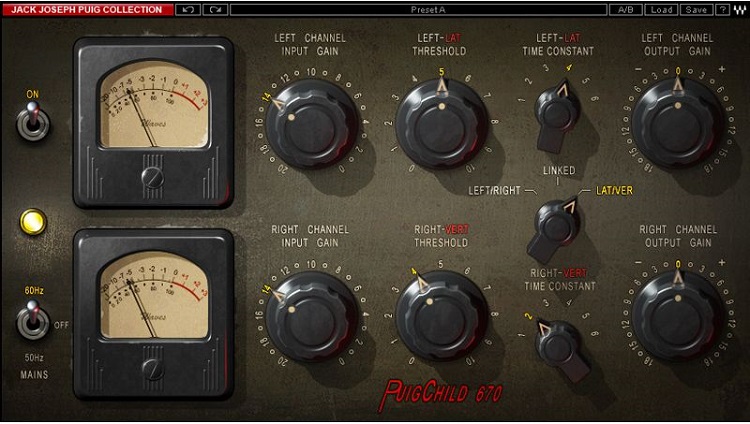
4. Pulsar Audio Mu
Another version of vari mu compressor that amazes us and that we really like to see in our projects. The Pulsar Audio Mu is a compressor that has amazing transparency even when you drive the signal more than the average. This plugin is great for that reason and we really like to use it on buses and the master channel.
It is a close emulation of the original and the circuitry was closely recreated as in the unit, ending up in a result that has a lot of warmth and analog goodness in it. What stands out about it is that the plugin was created with the Topology Preservation Technology by Pulsar which says it all about the closeness in emulation.
Even though it is an emulation, the plugin is equipped with some modern features, such as look-ahead limiting, sidechain EQ that is flexible, M/S processing, and more. The plugin offers amazing control over the dynamics and it is really precise in its performance. With the modern metering feature that it has, you can adjust the compression in real-time, having bigger control when compared to the original unit from Manley.
It is a great emulation, with great sound quality and features that every engineer will love. When compared to the original in terms of sound, only a very trained ear will be able to notice any differences, which is something good when comparing digital and analog units.
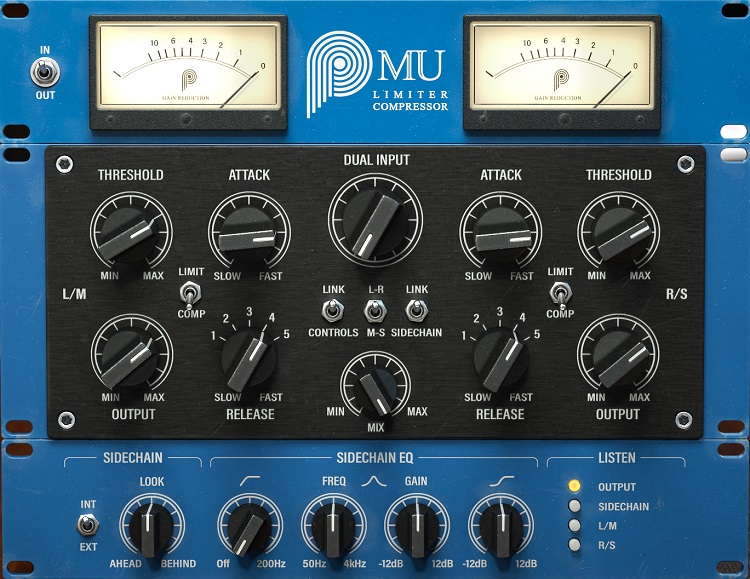
5. Klanghelm MJUC
When you first lay your eyes on this compressor, you will notice the regular big knobs on each side of the gain reduction meter, and you will certainly think, “This one will be easy to use”. Well, you are not wrong, cause this is an easy compressor to use and with a few minor tweaks, you will end up with a compression balance that is really musical yet precise.
The Klanghelm MJUC is an improved version of the old hardware compressors because besides the two main knobs, you will have additional features that will help you to shape the dynamic range more precisely, alongside the complete feel of the compression. Below the GR meter, you have the attack and release knobs, and on the bottom, you will have Timbre, Drive, Sidechain, and Dry/Wet knobs to finalize the result.
Again, this compressor will give you smooth outcomes that are very musical and you will be satisfied with it. Works really nicely on bass guitars and vocals, but we also like to use it on snare cause we like how it sounds on snappy signals as well.
It comes at a low price and most people will be able to afford it, making it a go-to plugin for many beginners who are after some serious compression. With this, we conclude the list of Variable Mu compressor plugins and we will summarize now.
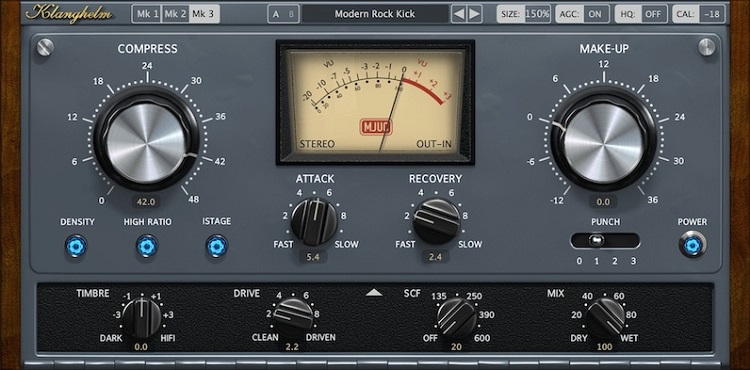
Conclusion
We really like using Vari Mu compressors when we are at the stage of mixing and mastering the projects we are on, and all of that is for a good reason. The outcomes from them are nice and warm, and they have lots of analog warmth in them that we love for certain genres like boom-bap hip hop and reggae music. Besides that, it gives a nice tonal balance as can be found on the original units that they firstly draw inspiration from.
So if you are at the stage of building a new mastering studio and you need to get a new compressor for it, consider a vari mu compressor unit. This type of compressor will give you the much-needed versatility, sound quality, and warmth that is needed at this stage.
We hope that this article was helpful and that you were able to draw some interesting points that you will use for your next journeys in the audio waters. Until next time folks!

